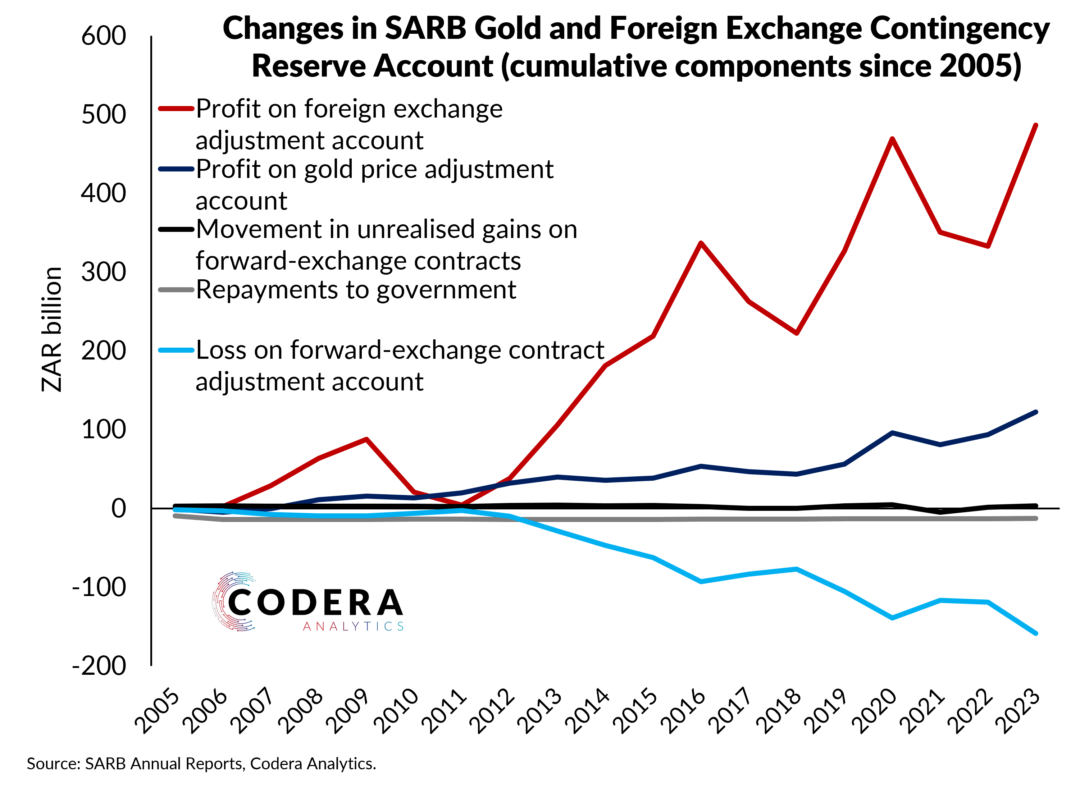This post assesses whether the rand has been misaligned relative to its economic fundamentals compared to the dollar. Since the drivers of
exchange rate movements tend to change over time, it is useful to use a framework that allows the relationship between the rand and its key macroeconomic fundamentals to change at specific points in time. In this post, I update the estimates from a Bayesian three-regime Threshold Vector Error Correction model based on the approach of Huber and Zörner (2019). The framework allows a number of variables to affect and react to the dynamics of the ZAR at any given point in time. The model specification used includes short-term interest rates, consumer prices, money supply and industrial production for South Africa and the US.

The chart shows the deviations of the USDZAR from its ‘explainable level’ calculated as the percentage deviation in the ZAR from the fitted value from the model (depending on which of three regimes the currency is in at each point). The ZAR has generally fluctuated within a 5 percent range around the level that can be explained by the model. Periods of large misalignment correspond to periods of significant depreciation in the late 1990s, late 2001, the global financial crisis and the COVID-19 pandemic. The model suggests the ZAR was near its explainable value in June 2023 (the latest month for which all macroeconomic data is available).
The estimates suggest that a large proportion of the dynamics of the rand can be explained at a particular point in time, even with a small number of fundamental determinants of the USDZAR rate. Contrary to estimates from other frameworks, such as those used by SARB or simple fair value models (here and here), the model suggests that there have been relatively few occasions when the rand has deviated substantially from levels consistent with the relative fundamentals of the economy. The implication is that the rand tends to move in line with economic fundamentals, which suggests that the rand tends to absorb a large proportion of the shocks that hit the economy, which helps shield the economy from their effects. This is consistent with our findings in this paper that suggests that ZAR deviations from fundamentals are generally not large when accounting for a large number of variables that affect ZAR dynamics.
Footnotes
The USDZAR is misaligned in the model if there are large estimated deviations from fundamentals. The ZAR is over(under)-valued if the posterior distribution (containing information from the priors imposed as well as from the data) of the threshold variable is below(above) the lower(upper) threshold.
It is important to note that the definition of misalignment in this analysis differs from those used in SARB’s models. The VECM used by SARB is based on the difference between the equilibrium exchange rate (i.e. the level consistent with the fundamental determinants of the exchange rate) and the current level of the trade-weighted real ZAR, while the semi-structural model of Botha et al. (2019). is used for creating narratives about the factors contributing to real effective exchange rate misalignments from equilibrium and inflation.

